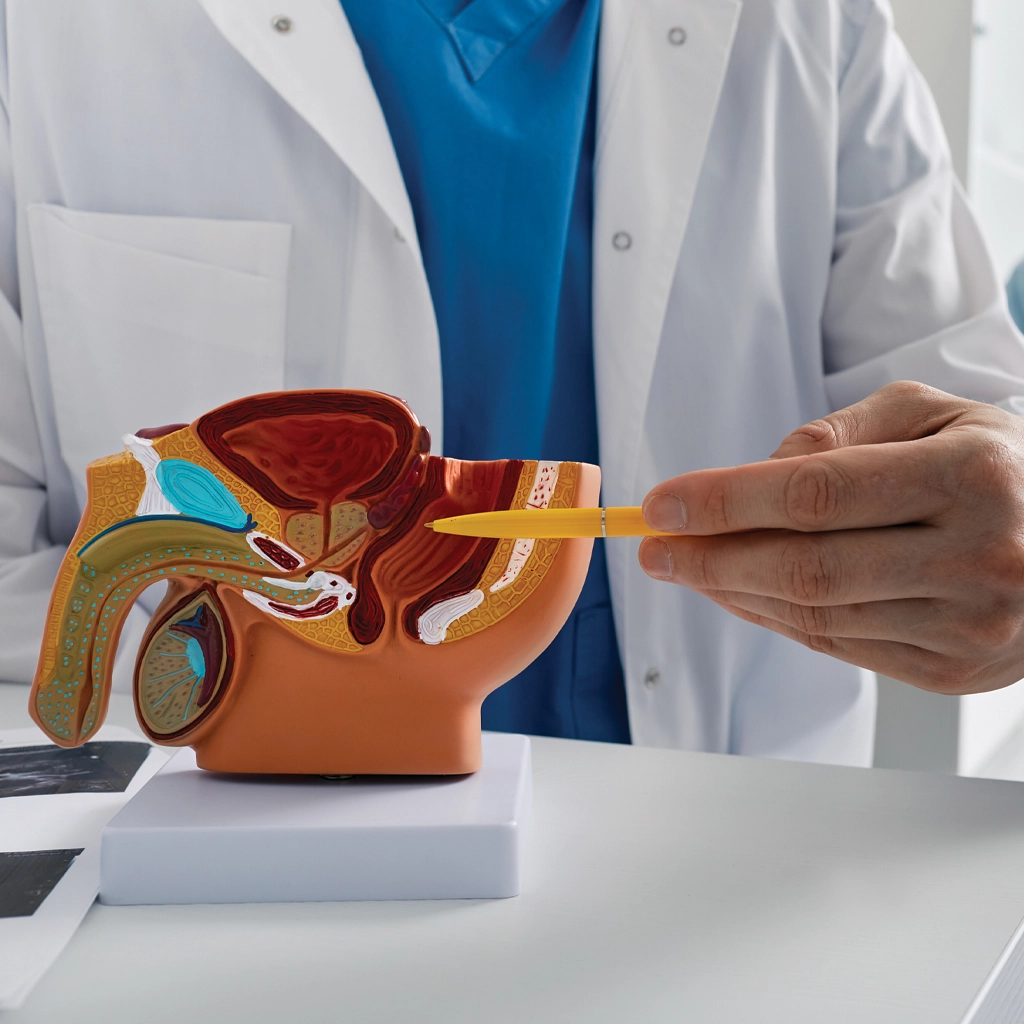What is Benign Prostatic Hyperplasia (BPH) or Enlarged Prostate?
After men reach the age of 50, they are at risk for a condition called benign prostatic hyperplasia (BPH), more commonly known as an “enlarged prostate.” As men get older, the prostate grows larger, and in some cases, can put pressure on the bladder and urethra. This can result in symptoms such as the urgent need to urinate (especially at night), difficulty starting urination, the inability to urinate, and even sexual dysfunction. When symptoms become severe, and medication is ineffective at treating symptoms, men have several options for treating the condition.
An effective alternative to prostate surgery is called prostate artery embolization or PAE. During this minimally invasive procedure, an interventional radiologist uses x-ray imaging to guide a small catheter through the body to the arteries that feed the prostate gland. Tiny microspheres are released into the smaller blood vessels, where they partially block the flow of blood to the gland, causing it to shrink. As the prostate shrinks over the next few weeks, the lower urinary tract symptoms are relieved.
Preparation for Prostate Artery Embolization
You will be given specific instructions by your interventional radiologist when preparing for a minimally invasive PAE procedure.
Procedure Time
The length of the procedure takes between 1-2 hours. You may return home the same day and can resume normal activities.
